|
1/26/2016 0 Comments Rock Shop Inspiration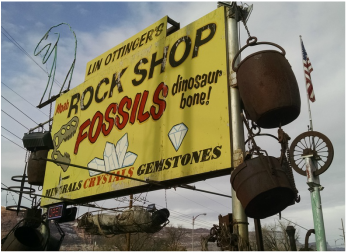 My husband and I took a weekend trip to Moab, Utah, where I had to stop at Lin Ottinger's Rock Shop. This world famous shop is the inspiration for the rock shop in my mystery series. We hiked in the area, bundled up against the chilly weather. Having the hiking and jeep trails to ourselves was a treat. Musselman Arch is off the beaten path. Photos can't do justice, but I've attached some so you get the idea. To really appreciate Utah, you have to see it for yourself. 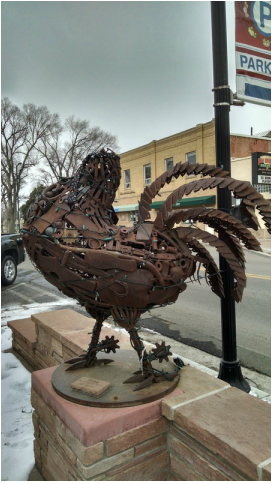 On our way home, we stopped in Fruita. We had brunch with friends, catching up with their newest grandchildren, and their recent trip to Israel. I snapped a photo of Mike the Headless Chicken. Yes, he was a real rooster. His head was chopped off in preparation for dinner. When he didn't die, his owner took him on tour. I'm not making this up. Read about it here: http://www.miketheheadlesschicken.org/
0 Comments
1/19/2016 0 Comments Where Do I Get My Ideas?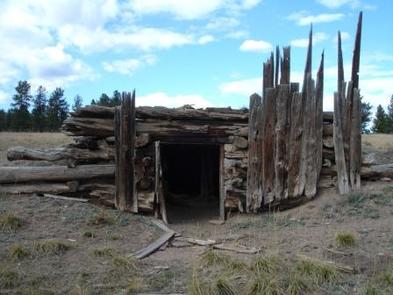 Readers often ask writers, "Where do you get your ideas?" Sometimes this is tough to answer. In the case of my novel Stone Cold Case - A Rock Shop Mystery, I know exactly how one aspect of the novel came to me. On a multi-family camping trip in the mountains, the adventurous young people discovered a dilapidated hunting blind. Branches had been placed across a narrow gully, and a blue plastic tarp hung over the entrance. Age and weather had worn it down, giving it an air of creepy decay. The kids had great fun dropping through the “roof” and sliding down the gully full of rotting leaves. I had a “what if” moment. My imagination dreamed up a body buried under the leaves. That image stuck with me for a couple years before it worked into a story. In Stone Cold Case, the body is not found in a hunting blind, but both the real blue tarp and the imaginary body became vital to the story. The hunting blind evolved into a prospector's dugout. These structures dot the Colorado mountains. Some are log cabins dug into a hillside, while others are little more than a crude lean-to. They exist in varying states of condition. On a hunting trip I ran across this dugout, now used by cattle. In my novel, the dugout becomes critical to solving a murder case. Where do I get my ideas? This time, from the Colorado mountains, and the bits of physical history still in existence. 1/12/2016 1 Comment What Matters Most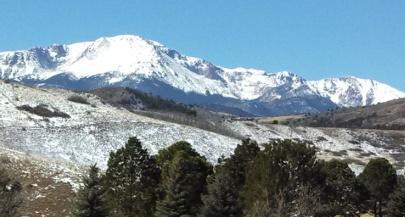 By the end of 2015, I was frazzled. So many writing and family activities jammed into September, October, and November that I was drained by the end of the year. When I let my life get so busy that any deviation in my schedule threw a King Kong sized monkey wrench into my plans, I knew it was time to reassess my schedule. Time is more valuable to me than money, and yet I don't budget my time with the care that we now use in our financial planning. I came to a realization that I was letting the things I love be pushed aside by the must-do list. There are a finite number of weeks, days, hours in a year. Going fishing or hiking during the summer takes advanced planning. Not so much for the activity itself, but making sure we haven't committed ourselves for the weekend already. I'm going to start blocking weekends out on the calendar for outdoors adventures. Quiet time, those days when you just putter around the house or yard doing nothing of particular importance, is a precious bit of life. So is scheduled downtime. We had been keeping our Saturdays set apart as an expression of our faith. I need to recommit to that sacred time. You can't stop to smell the roses if you aren't growing any. I realize how important gardening is to me. Working outside gives me a sense of renewal. I missed the precious last weeks of vegetable gardening due to over scheduling myself. Gardening is a time limited activity, with strict boundaries from the last frost in spring to the first freeze in fall. I want to make the most of every precious day of gardening season. This weekend I spent several hours pruning and repotting houseplants. I was excited, thinking of how taking care of the indoor plants now frees up my time later, to start planning my outdoor garden. A part of budgeting your time is attending to chores today so you can enjoy other activities later. In 2016, I hope to go fishing more. Spend more time gardening. Enjoy unstructured time with my daughter and her family. Leave openings in my schedule for spontaneity. And write. Just write. For the joy of writing. Here is a fun link to the HGTV garden page, and 20 garden goals for 2016: http://www.hgtvgardens.com/garden-basics/20-garden-goals-worth-setting?nl=HGO_010816_featlink1_&c32=a21389353182dc2a274b2737be0b58731f7611c5&sni_by=&sni_gn=Female&ssid=2015_DIY_Network_Blog_Cabin_2015_Wildfire&bid=5875089 1/5/2016 0 Comments Ammonite versus Ammolite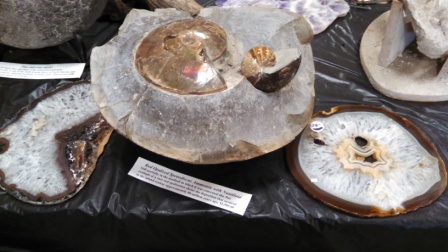 At center: Red Opalized Spenodiscus Ammonite with Nautiloid At center: Red Opalized Spenodiscus Ammonite with Nautiloid One letter makes a world of difference. In book two of my Rock Shop Mystery series, Stone Cold Case, the discovery of a rare gemstone stirs up a dangerous treasure hunt in the Colorado Rockies. Ammonite and ammolite are both the result of the fossilization of now extinct cephalopods. The nautilus is its closest living relative. You may purchase a polished ammonite, perhaps as a pendant or earrings, for the price of costume jewelry. A shame, since it took nature a long time to fossilize the cephalopod. Of greater value is ammolite, formed of the same extinct animal but fossilized with different minerals. According to Virtual Fossil Museum, "During fossilization, the nacreous layer of some ammonites was chemically transformed into an iridescent material called ammolite, which is aragonite with varying mineral impurities that is considered to be an opal-like gemstone." Ammonite is found all over planet earth. Look for it at your local rock shop. Ammolite is a rare form of ammonite. One of the main locations of ammolite is a mine in Southern Alberta, Canada. Due to its rarity, ammolite commands a far higher price than ammonite. In Stone Cold Case, I faced the problem of making sure the reader knew which version of the mineral I was referencing. When reading, your brain tends to fill in information automatically. Here's how I explained the difference between ammonite and ammolite in the first scene mentioning the fossils: Morgan held one of her larger pieces next to the photos. “That’s it.” “Ammolite is an organic gem.” “I thought all rocks were organic.” “People call everything organic nowadays,” Del said. “They throw the word around to make things sound healthy. I mean organic in the sense that it was alive once. Rocks are minerals, but ammonites are fossils. Shells, specifically. And when just the right minerals happen along during the fossilization process, it turns into this.” He picked up a dazzling blue, green, and gold gem. “Ammolite.” Morgan skimmed the paragraph in the book on how ammolite forms. “So there are only three gemstones produced by living organisms. This stuff, pearls, and amber. Wow.” “If there’s ammolite in the hills around here, all heck will break loose.” “So ammolite is valuable?” “Very rare.” Del picked up a chip and studied it. “If you had ammolite on your property, you’d have no money problems.” For more photos and information on ammonite and ammolite, check the links below: http://www.fossilmuseum.net/Fossil_Galleries/Ammonites.htm http://geology.com/stories/13/ammolite/ https://www.gemsociety.org/article/ammolites-jewelry-and-gemstone-information/ http://animals.nationalgeographic.com/animals/prehistoric/ammonites/ |
Subscribe to this blog: |
Proudly powered by Weebly
 RSS Feed
RSS Feed